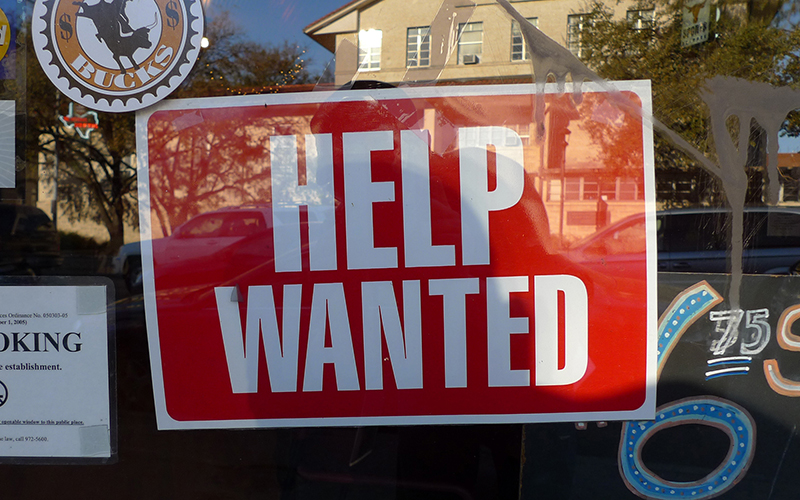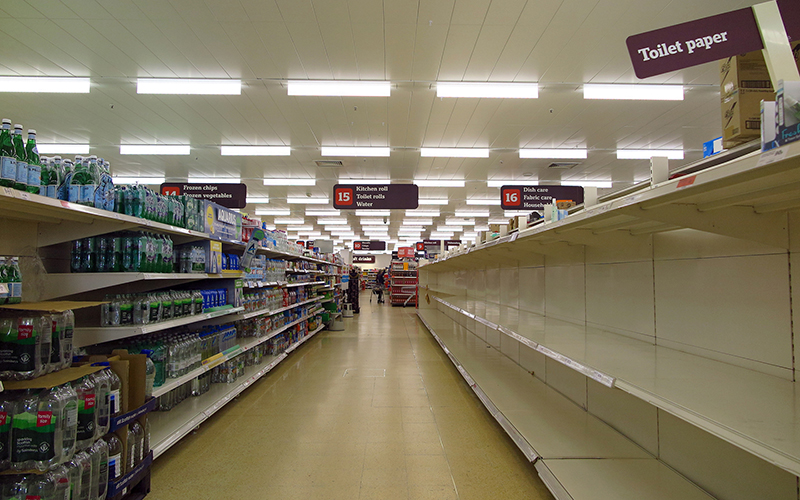
More than 418,000 Arizonans – and 26 million Americans – have filed for unemployment in the past five weeks, a record pace for jobless claims. The losses, traceable to the COVID-19 shutdown, amount to two-thirds of the jobs added to the Arizona economy in the past 10 years. (Photo by Andreas Klinke Johannsen/Creative Commons)
PHOENIX – New jobless claims in Arizona over the past five weeks have wiped out two-thirds of the new jobs created in the state over 10 years, according to the latest numbers from the Arizona Department of Economic Security.
While unemployment filings fell for the second straight week, the 72,103 Arizonans seeking unemployment in the week ending April 18 was still in historically high territory. And it capped a record-breaking five-week run in which 418,016 Arizonans lost jobs – or two-thirds of the roughly 631,000 jobs added in the state since the depths of the recession in 2010.
Economists and business leaders said the numbers are bad, but may not be as bad as they appear, since some of those newly unemployed workers may already have found jobs and there are not – yet – underlying economic problems beyond the COVID-19 shutdown.
“Even though it looks bad, it is not a total shutdown but a slow-down of business,” said Bart Hobijn, an Arizona State University economics professor.
He said weekly jobs data does not accurately represent the situation – but also understands that it is currently the only number available for people anxious about the economy.
“In times like the Great Depression, we would analyze the situation on a month-to-month basis but since this has happened so fast, weekly unemployment reports are the only numbers we have to show us how much this has affected businesses,” Hobijn said.
The state numbers tracked, on a smaller scale, national jobless claims, which totaled more than 26 million in the last five weeks, peaking two weeks ago at just under 7 million claims before dipping.
The national unemployment rate stood at 4.4% in March, according to the Bureau of Labor Statistics, and a new rate will not be released until next month. Some publications have predicted that the April rate could top 20%, the highest since the Great Depression, but experts said it is too early to make such predictions.
“Many of these people are not still unemployed. There are jobs out there that people find after filing, there are companies that need workers,” Hobijn said of the people who have filed claims in recent weeks.
“Plus, there are a lot of seasonal jobs that people may simply be leaving,” driving up the jobless rate for reasons unrelated to the coronavirus, he said. “Even though it looks bad … people will switch to where employment is.”
Garrick Taylor, executive vice president of the Arizona Chamber of Commerce, said many businesses within the chamber have made new hiring a priority during the pandemic, with many of those jobs in manual labor, hospitality and custodial work.
Taylor said businesses will be helped by the approval Thursday of another $321 billion for the Paycheck Protection Program, a small-business loan program that ran through the first $349 billion in less than two weeks as stressed businesses flooded it.
“We strongly encourage businesses to utilize the PPP, because an employer-to-employee relationship is absolutely essential in preserving business,” Taylor said. “If people are not receiving a paycheck, that relationship becomes fractured and businesses close.”
University of Arizona economics Professor George Hammond understands how people assume the worst when they see unemployment numbers that are being compared to the Great Depression. But he said those are two “very different situations.”
“I have talked to some people, and there are reports of a 25 to 30% downturn in GDP (gross domestic product),” Hammond said. “But it’s a temporary thing, social distancing is driving this. If businesses were not forced to close we would not see so many jobless claims.
“This is a very different situation than the Great Depression,” he said. “We are dealing with a global pandemic and federal authorities are working hard to ensure that we rebound quickly after this ends.”
But Hammond and others said reopening the economy will have to be done carefully. Taylor agreed that state officials “must reopen the economy in the least stressful way possible to the community.”
“This decision must be based on public health and the safety of our people,” Taylor said. “As much as the economy needs to be reopened, we cannot reopen at the cost of another public health crisis.”
But there is no question there will be lingering effects on the economy. Even when businesses, start moving again, the experts said, they may be different.
“Economic activity will rebound … job growth will recover, maybe with less staff and more precautionary measures, but jobs will come back relatively quickly,” Hammond said.
And Hobijn said Americans are better situated now than they were in 1929 and have more tools to head off another depression.
“Economists have learned a lot over the last 90 years,” he said. “There are a lot of policies in-place with the stimulus to ensure we don’t suffer.”

